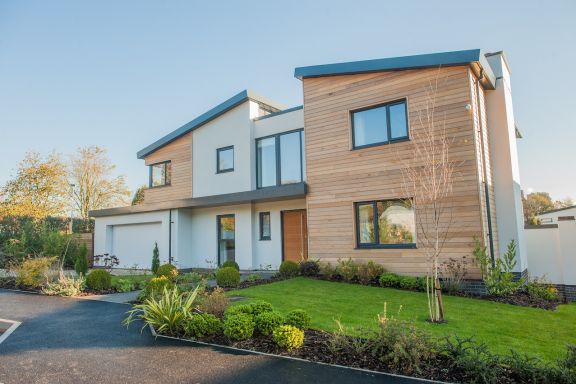Choosing an installer
Having decided that solar PV is the right option for your home, the next task is to find an installer and Cathy has some useful advice to make the process easier. “Don’t buy just on price,” she says. “There’s been a bit of a price war going on in the market, but cheaper doesn’t necessarily mean better when you’re buying something that you want to work effectively over a 20 to 30 year period. It’s also important that the installers do a good job and are likely to be in business to sort out any problems that arise over the longer term.”
Ideal conditions
Not every home is well-suited to the installation of solar panels and there are certain criteria that need to be met before an investment can be considered worthwhile. According to Cathy, a solar PV system should ideally face between south-east and south-west. “For best performance they should be angled at 30 to 40 degrees, although you will still catch a reasonable level of sunlight at angles of 20 to 50 degrees," she says.
Shade falling on the roof will reduce the performance and Cathy explains that close structures, such as gable windows or chimney stacks, can be a problem. "Objects such as trees or a neighbouring house may not block the sun during summer, but can create shade when the sun is lower in the sky in winter," she says.
Solar panels also weigh quite a bit, so your roof must be strong enough to hold them. "If you need to re-roof, you can do so using solar tiles," says Cathy. "These are more expensive than panel systems, but if you are re-roofing anyway, it can be more cost-effective to re-roof with solar tiles than to use conventional tiles and put panels on top."
Investing in solar
While there is money to be saved by installing solar panels, the initial financial investment can be a stumbling block for many. According to the Energy Saving Trust, the average domestic solar PV system is 3.5–4kWp and costs from £5,500 to £9,500 (including VAT at 5%). But for those who can afford this kind of investment, the system definitely pays off. A 3.5kWp system can generate around 3,000 kilowatt hours of electricity a year. That will cover about three-quarters of a typical household's electricity needs.
This is something that Cathy can attest to, having installed both a solar PV system and solar thermal in her own home. “I'm very happy with both installations,” she says. “When you take into consideration the feed-in tariff benefits, we were in profit on energy bills last year, receiving £61 more than we spent, although our energy use is below the national average.”
While solar PV uses sunlight, solar thermal uses heat from the sun to heat up water, which is then stored in a cylinder. “In summer the solar panels can provide most of your hot water, and in winter they just tend to raise the temperature of water in the cylinder so that the boiler has less work to do,” explains Cathy. But cost savings are estimated to be between £60 and £85 per year, depending on the fuel type that is being replaced.
Cathy adds: “While the solar PV is better in financial terms, I get more pleasure from the solar thermal. There is something very satisfying about relaxing in a bath when the water has been heated solely by the sun.”




